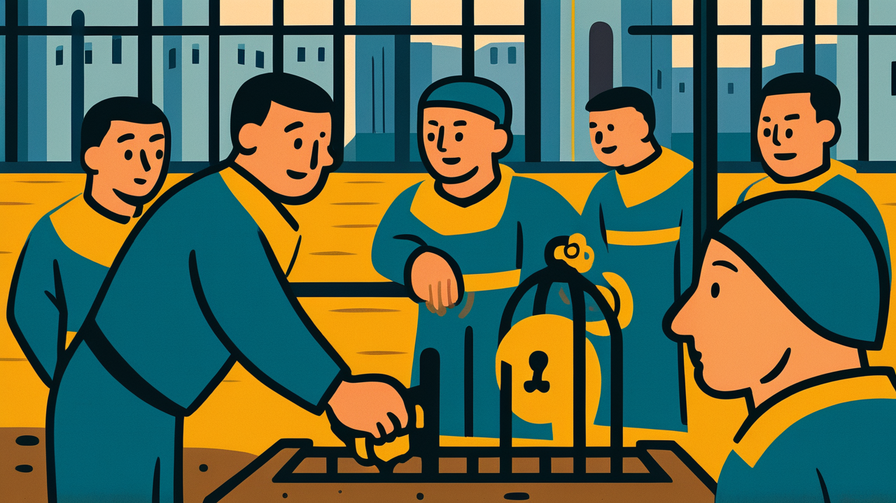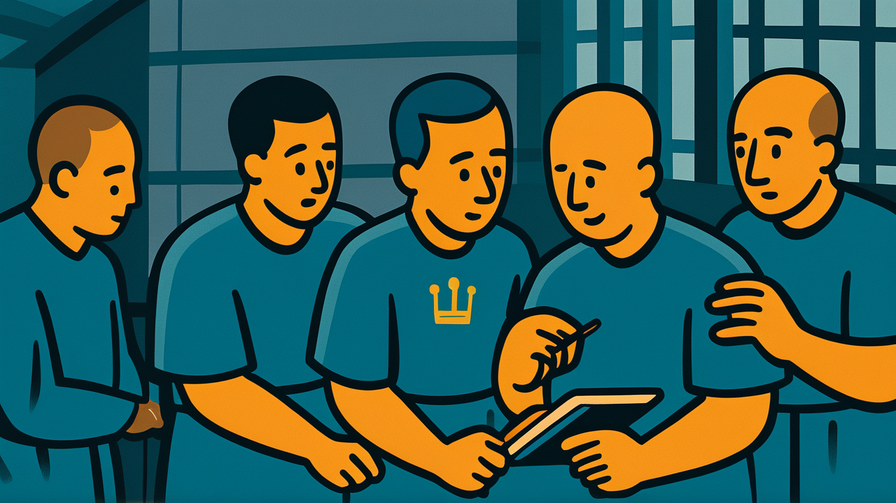[Disclaimer] This article is reconstructed based on information from external sources. Please verify the original source before referring to this content.
News Summary
The following content was published online. A translated summary is presented below. See the source for details.
Ukrainian prisoners are creating remarkable works of art that challenge traditional notions of freedom and creativity. Despite being held in captivity, these individuals are producing paintings, drawings, sculptures, and written works that express their hopes, memories, and resistance. The art ranges from detailed portraits of family members drawn from memory to abstract representations of freedom using whatever materials are available – sometimes just pencil stubs and scraps of paper. Many prisoners create art as a form of psychological survival, maintaining their humanity and connection to the outside world. Some works have been smuggled out and displayed in exhibitions across Europe, bringing international attention to their plight. These artistic expressions serve multiple purposes: they document experiences, provide emotional outlet, maintain mental health, and send messages of resilience to the world. The phenomenon highlights how creativity can flourish even in the most restrictive conditions.
Source: Global Voices
Our Commentary
Background and Context

Throughout history, prisoners have used art as a form of expression and resistance. From the Soviet Gulag system where prisoners created miniature sculptures from bread, to Nelson Mandela’s poetry on Robben Island, art in captivity has served as both testimony and therapy. The current situation of Ukrainian prisoners continues this tradition.
Since February 2022, thousands of Ukrainians have been detained in various circumstances related to the ongoing conflict. International humanitarian organizations estimate that many are held in difficult conditions with limited access to basic supplies, making their artistic achievements even more remarkable.
Expert Analysis
Psychologists who study trauma and resilience emphasize that creative expression plays a crucial role in maintaining mental health during extreme stress. Art therapy has been proven to help process trauma, reduce anxiety, and maintain a sense of identity. For prisoners, creating art serves as a form of agency – a way to make choices and express individuality when most freedoms have been removed.
Art historians note that prison art often contains coded messages and symbols that might not be immediately apparent to guards but carry deep meaning for fellow prisoners and outside supporters. Colors, shapes, and subjects can all convey hidden meanings about conditions, hope, or resistance.
Additional Data and Fact Reinforcement
According to international human rights organizations, access to creative materials in detention facilities varies widely. The Geneva Conventions guarantee certain rights to prisoners, including access to educational and recreational activities, though these are often limited in practice. Studies show that prisoners who engage in creative activities have 23% lower rates of depression and 31% better outcomes upon release.
European museums and galleries have increasingly recognized the importance of prison art. The Koestler Arts charity in the UK, for example, has been showcasing prisoner artwork since 1962, helping to humanize incarcerated individuals and challenge stereotypes.
Related News
This story connects to broader movements supporting prisoners’ rights and artistic expression. In the United States, the Prison Arts Coalition works with over 300 organizations to bring creative programs to incarcerated people. Similar initiatives exist across Europe, recognizing art’s role in rehabilitation and human dignity.
Recent exhibitions of Ukrainian prisoner art have toured galleries in Poland, Germany, and France, raising awareness and funds for humanitarian aid. These shows often include QR codes linking to prisoner support organizations.
Summary

The artistic works created by Ukrainian prisoners demonstrate the indomitable nature of human creativity and hope. Despite facing severe restrictions and hardships, these individuals continue to express themselves, document their experiences, and maintain connections to their identity and culture. Their art serves as both historical documentation and a powerful reminder that creativity can flourish even in the darkest circumstances.
Public Reaction
Gallery visitors have been deeply moved by the exhibitions, with many expressing surprise at the technical skill and emotional depth of the works. Art collectors have shown interest in purchasing pieces to support prisoner aid organizations. Social media campaigns using hashtags like #ArtBehindBars have helped spread awareness globally, particularly among younger audiences who might not otherwise engage with prisoner rights issues.
Frequently Asked Questions
Q: How do prisoners get art supplies?
A: Supplies are often extremely limited. Prisoners use whatever is available – pencil stubs, food coloring, torn paper, or materials from care packages when allowed.
Q: Can prisoners sell their artwork?
A: This varies by location and circumstances. Some exhibitions sell works with proceeds going to prisoner support funds or families.
Q: Is creating art in prison legal?
A: Generally yes, as it falls under educational and recreational activities protected by international law, though individual facilities may have restrictions.


